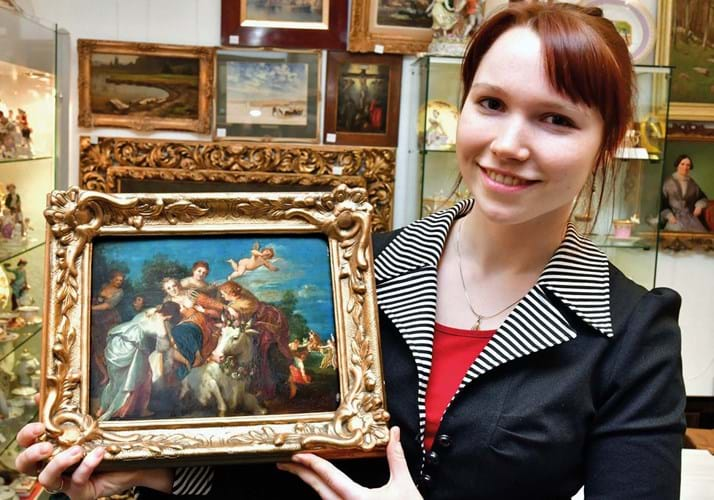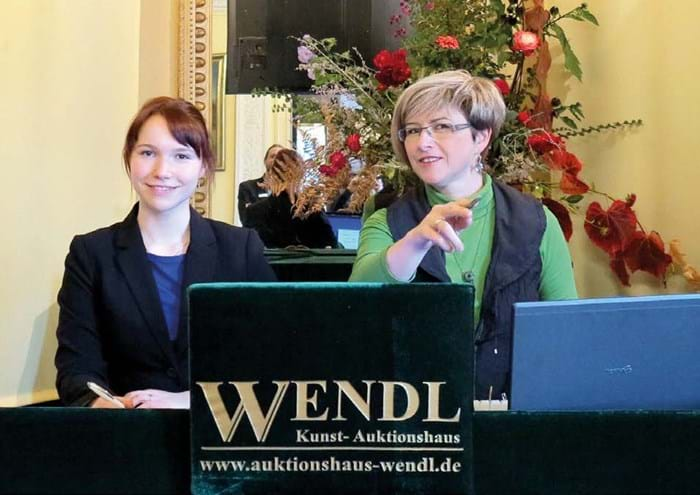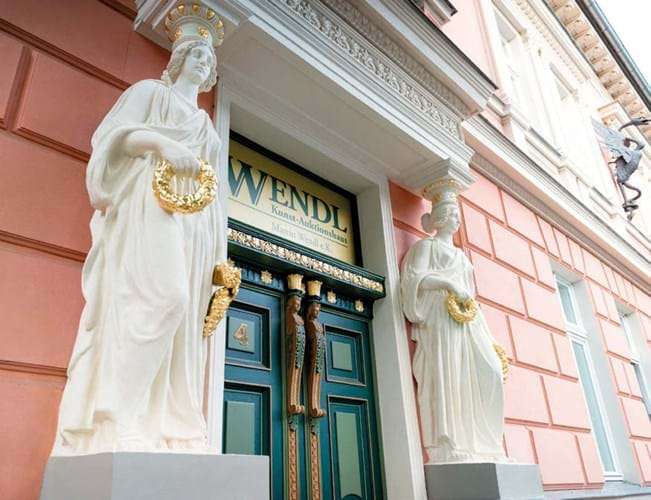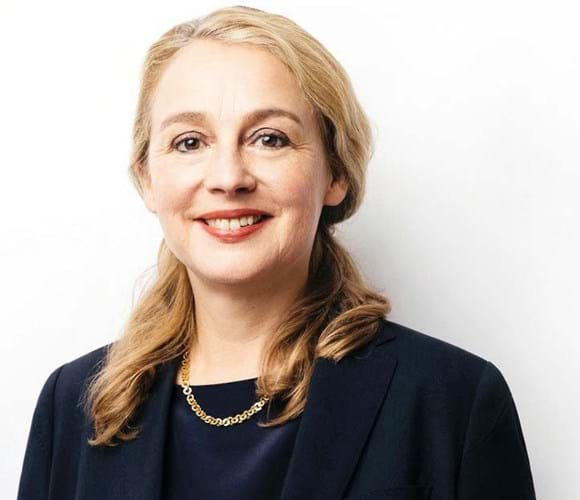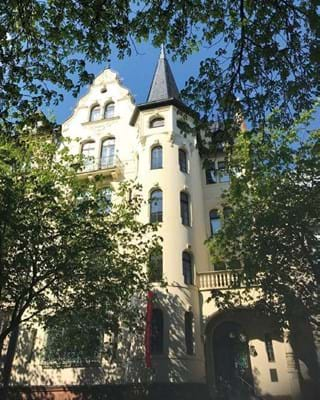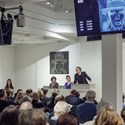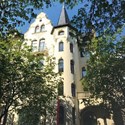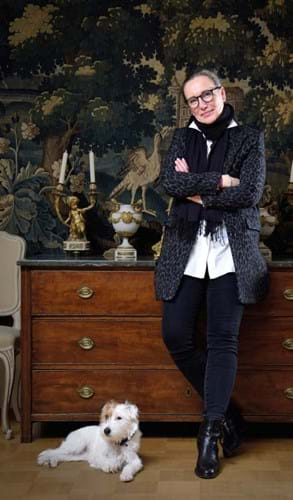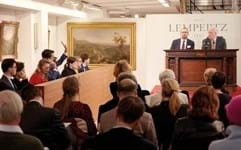Kunst-Auktionshaus Wendl
Julia Marie Wendl, company manager
Based in Rudolstadt, in the German state of Thuringia, 26-year-old Julia Wendl represents a new generation at Kunst-Auktionshaus Wendl.
She follows in the footsteps of her parents who founded what is now a well-established auction house. Indeed, her mother Anke Wendl is a ceramics expert on Kunst und Krempel, the German equivalent of the BBC’s Antiques Roadshow.
Julia Wendl returned to the business after finishing a degree in the UK at Christie’s and a Masters at the Sotheby’s Institute of Art in 2017.
Launched in 1991, Kunst-Auktionshaus Wendl was one of Germany’s first houses to embrace online bidding in 2010.
The firm has long been a partner of thesaleroom.com and online auction portal Lot-tissimo, recently acquired by Auction Technology Group (parent of Antiques Trade Gazette).
“Online bidding has helped us grow to become the largest auction house in the former eastern German states,” says Wendl. “It has a lot to do with our clients, but also with Lot-tissimo and thesaleroom.com.”
Wendl cites a recent bidder from Ukraine who was determined to pick up a work by the artist Sergei Ivanovich Vasilkovsky (1854-1917).
The online contestant held off bids in the room, on the phone and on commission. “And we are glad that the live-bidding option helped to return such a wonderful piece back to its country of origin.”
Wendl says that Lot-tissimo (affectionately shortened to Lotti in Germany) has proved to be a good partner. “When we’ve had problems, we’ve always had help,” she says. “If we had issues with live bidding, or we needed information on how to set up audio or video, we get help.”
Kunst-Auktionshaus Wendl holds three, three-day auctions every year, in spring, summer and autumn, with each sale offering around 4000 lots across multiple collecting disciplines. For the recent March auction there were more than 3600 bidders, including 1574 online participants, around 900 coming from ‘Lotti’ alone.
Global reach
After going online, Kunst-Auktionshaus Wendl quickly developed a global reach that belied its then size. “We were able to become ‘international’ quite quickly at a time when internet bidding, especially from overseas, was young,” says Wendl.
The exposure on Lot-tissimo has been central, even attracting Americans eager to explore their roots in the German region using the online portal to search for items, such as cups with images of their ancestors’ towns.
But providing an online service is not at the expense of the personal experience for visiting clients.
The auction house is located in an old villa with a large garden with visitors offered the full viewing experience: a champagne reception accompanied by a jazz band.
Similarly, Wendl points to how the house maximises the value of its regional location.
“We’re in the middle of Germany and we live in a cultural region with many castles,” she says – motivation enough for visitors to combine a holiday with an auction.
“We’re still a very traditional family business in many ways,” Wendl concludes. “Our clients look forward to visiting because we still value the personal connection.”
Grisebach
Rigmor Stüssel, director
“We believe in the charm of in-house auctions,” says Rigmor Stüssel, the head of the Grisebach saleroom in Berlin. This is where “people can meet, it has a special atmosphere, with buyers, sellers, experts”.
Putting on an ‘event’ is something that Grisebach, one of the country’s leading auction houses, takes seriously. Headquartered in a city villa, auctions are complemented by exhibitions – such as the Christian Jankowski show which runs until May 12.
Many of the works will be available for sale, though footfall is just as important. “We are in some ways a classic gallery business,” says Stüssel. “Even if there is not an auction, we like to put on exhibitions here to give visitors the chance to enjoy culture.”
With auctions just twice a year, in May and October, sales are major events numbering more than 1500 objects. Combining online with room and phone bidding gives Grisebach the best of all worlds, says Stüssel. “It’s completely understandable that some people cannot attend every auction,” she says.
Online convenience
The tie-up with Lot-tissimo has been a good one, Stüssel says. “Online certainly plays a big role for us, especially with international customers. We have bidders from across the world.” Around 30% of Grisebach customers come from outside Germany, though with higher-priced works it is around 50%.
Though not overly worried at this stage about Brexit, Stüssel is concerned about where online portal servers are located.
“For us it is very important that the servers are in Europe,” she says. “This is key to why we decided to work with thesaleroom.com and Lot-tissimo.”
Kendzia
Eva-Maria Uebach-Kendzia, proprietor
It takes just minutes in the company of Eva-Maria Uebach-Kendzia, owner of Kendzia auction house in Hamburg, to realise that heritage and tradition mean everything to her. “Our auction house has existed since 1971, founded by my parents, Klaus and Brigitte Kendzia in a building from the Golden Twenties (aka the Roaring Twenties),” she says.
Eva Kendzia started work alongside her parents as soon as she finished her studies. She recently took control of the firm, at a time when a handful of other auctioneers in the city had closed. Kendzia now ranks among the oldest salerooms in the city.
As with so many auctioneers who live and breathe the job, Uebach brings a real passion for art and antiques.
“I inherited a good nose for good things,” she says. “Since I was a child I’ve been surrounded by antiques. You just learn it.”
Her main interest, she says, is “to preserve the best things from old times”.
She describes Kendzia as a small general auction house which until recently relied primarily on word of mouth for its good name.
“We’re not too aggressive in how we source our lots,” she states with an element of pride.
However, conscious of the need to attract new buyers at a time when “knowledge about good quality items is being lost”, Kendzia has been using Lot-tissimo for a year.
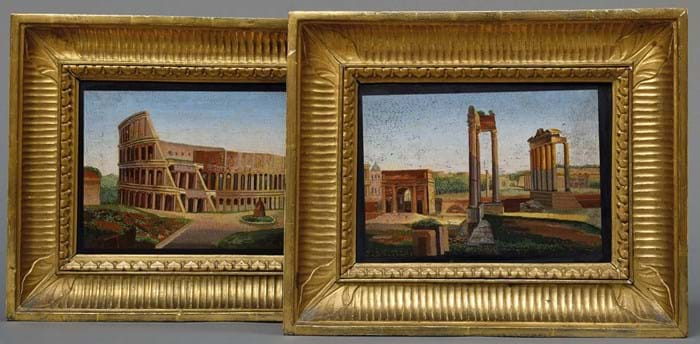
A pair of Italian micro mosaic panels c.1820 depicting the Forum and the Colosseum in Rome, which are estimated at €4000 in Kendzia’s June auction.
New customers
“I have some customers whom I wouldn’t have had without Lottissimo and it has given us a big boost.” Eva Kendzia cites the major interest in Asian countries for Chinese works of art and global bidding for good quality Russian porcelain as two results of greater international exposure.
Shipping has become an important facet of the business – helped by delivery companies such Mail Boxes Etc. “You cannot just send valuable objects with the normal postage service,” she says.
The business is in a period of transition, as online bidding becomes more important, and customer needs and preferences evolve.
“People prefer to buy famous names rather than beautiful art,” she says. There is, however, a real upside to the online revolution. “I’ve seen people 80 years old going online, using their iPads to look at photos of objects, swiping from left to right. It’s fantastic.”

